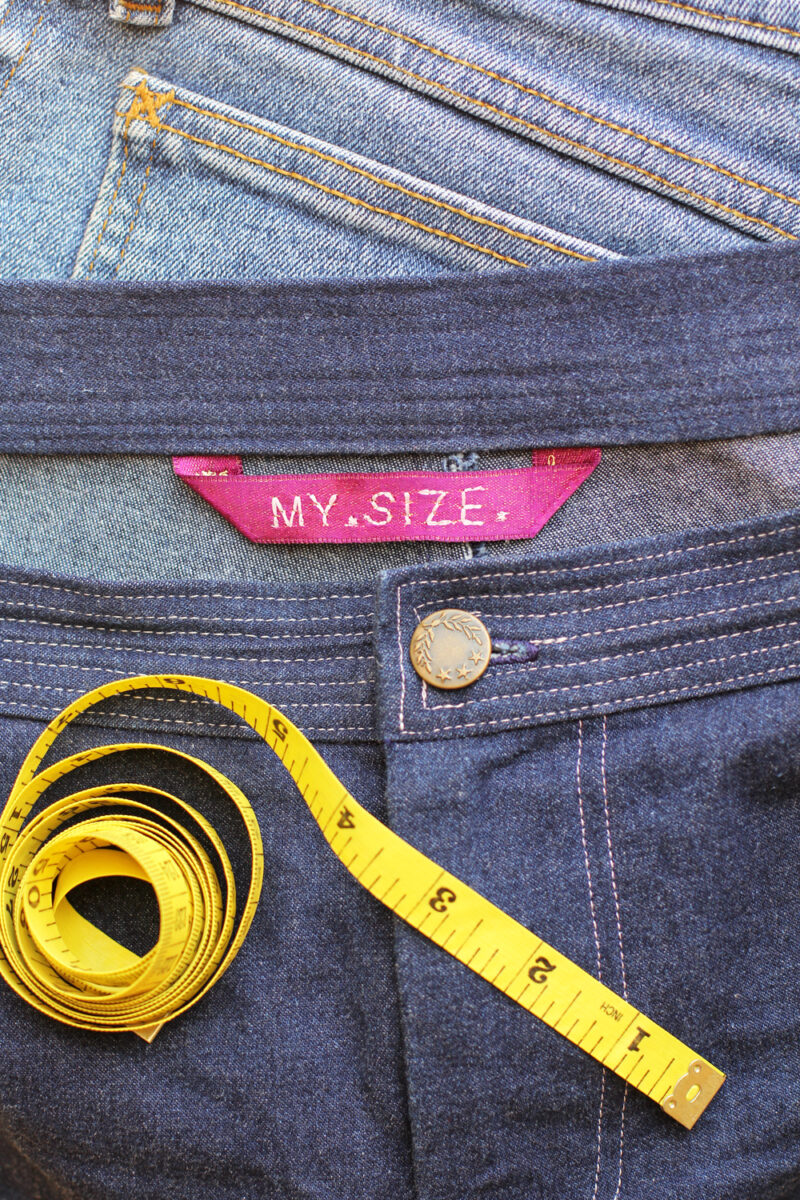 When I’m not sitting behind the sewing machine, I work full-time as a psychologist. This is why I every once in a while share a mental health-related post on this blog. Please grab a coffee and join the conversation!
When I’m not sitting behind the sewing machine, I work full-time as a psychologist. This is why I every once in a while share a mental health-related post on this blog. Please grab a coffee and join the conversation!
***
This isn’t a scientific research article. As there is very little research to review on this topic, information given in this post is largely based on my work experience and training as a mental health professional.
For a long time I have been wanting to write about making your own clothes and its relationship to body image. While sewing encompasses our skills, tools and materials, our bodies are the foundation when it comes to making and wearing garments. I myself feel like I developed a healthier body image of myself since starting to sew my own clothes. There are many other sewing bloggers who have written about how they feel sewing affected their perception of themselves. (I’ve put together a list of blog posts I could find at the end of the article.)
Why is that? And how can sewing help to see ourselves in a more positive light? First, let’s have a look at the term “body image” to know what exactly we’re talking about.
Body image is the mental representation you create of yourself and the way you look. It consists of the mental image you have of your own physical body, meaning your size, shape and appearance, as well as your personal attitude toward that physical self. Your attitude is made up of your thoughts and feelings and also beliefs about your body. All this together is your “body image”. And, this mental image of your body does not necessarily represent reality. It is also not super stable and can change as it is subject to all kinds of distortion from moods, perceptions, feelings as well as a number of social factors.

Healthy body image has to do with self-acceptance and self-compassion. It means you are comfortable with the body you have, even when you do not think that you are perfect. It is about accepting flaws, embracing the body that is given to you and caring well for it.
When someone has a negative or unhealthy body image they find it very hard to accept and think positive about the way they look. They might be very preoccupied with perceived flaws. They might experience discomfort, disgust and shame, as they will also believe that others think about them in the same way. Severe dissatisfaction may result in a constant desire to change their body, even when such changes are not achievable. Negative body image may contribute to low self-esteem, unhealthy eating behaviour and therefore might affect your well-being. In severe cases unhealthy body image might cause severe distress, contribute to depression, eating disorders, body dysmorphic disorder, self harm etc. In those cases the help of mental health professionals is needed as it seriously affects functioning and quality of life.
Healthy body image is not synonymous with healthy body weight. It this case we’re differentiating between physical and mental health (although these two are very much connected). Even if you’re over- or underweight, it is important that you find ways to accept yourself the way you are, whether there is a need to get to a healthier body weight or not. A diet or lifestyle change will be more successful and long lasting if you do it out of self-love and self-care instead of disgust and self-hate.
The term “body positivity” appears to be now used interchangeably with the term body image, whereas body positivity sounds “trendier” and appears less connected to mental health problems such as eating disorders and body image disorders, self harming etc. I am a bit cautious using both terms as synonyms, as body image is a very complex term consisting of many factors and variables, whereas body positivity mainly focusses on loving yourself unconditionally. Your body image will always contain negative perceptions, too, as it is normal to be critical of yourself. The extreme promotion of body positivity seems to lead to a converse trend of not allowing body negativity. People that are “objectively” perceived as beautiful (if there even is a chance that we can speak of being objectively beautiful…) are often openly and very harshly reprimanded on social media for “attention seeking behaviour” when they open up about not liking themselves. But this isn’t my topic today (I’ll save it for some other time, though.)
Many of skills we use when sewing a garment for ourselves are similar to certain therapeutic techniques used for building positive body image.
In my profession as a psychologist, I used to mainly work with eating disorder patients for a while, a group suffering from one of the more severe forms of body image disturbance. There are various methods and techniques to try and help someone change their perception of themselves. I’ve noticed that many of these techniques that focus on observation, non-judgment, neutrality, acceptance and self-compassion are similar to certain skills we use when sewing a garment for ourselves.
I found this very exciting, as I’ve shared the opinion that sewing changes body image in a healthy way, but there is pretty much no research on this topic so it is hard to pinpoint the causalities and correlations.
When sewing, instead of rejecting your body, you are working with it.
It’s hard to reject your body when you sew. As it is our foundation, we have to work with it. Working with instead of rejecting it means we are a big step closer to embracing our bodies and what we look like. To make a garment fit your body, you have to go beyond the “I don’t like the way it looks on me” or “my body doesn’t fit the pattern”. You have to take a step back and look at yourself from a more objective angle. You’re looking at general forms and thinking in shapes instead. You’re on a very different level of judgement. Instead of judging the way you look and whether or not you like the overall image of yourself, you’ll be judging whether one shape matches the other shape and if not, where and what you have to mathematically tweak in order to make it fit. This is a healthy way of observing yourself in a more neutral, constructive way and taking a step back from judging yourself in unhelpful ways.
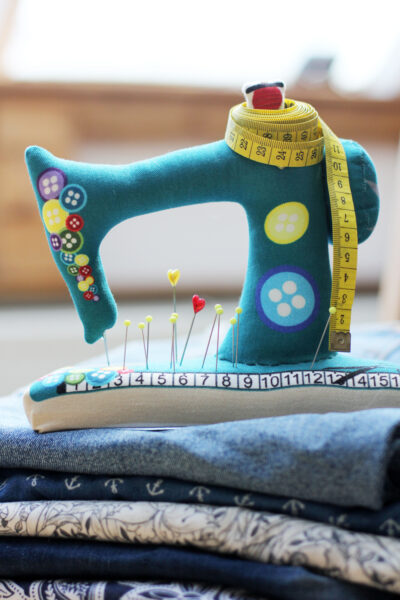
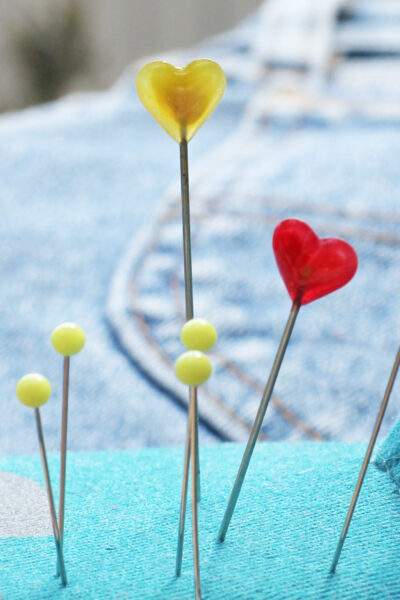
We tend to compare ourselves to others all the time. This is reinforced through social media. The sewing community is no exception, but it’s certainly a „slightly healthier crowd“ to compare yourself with. It’s about achievable goals, constructive skills and support. You might notice that almost no one has a perfect body. Everyone has to make adjustments. It’s a very rare thing to fit into the ‘average size’. Reading about other people’s experience when sewing a certain pattern and learning about their struggles with fit, can help to develop some self-compassion toward your own body shape.
There has been research on the link between body image and self-esteem and the link between self-esteem and creativity. Body image and self-esteem are different concepts, as self-esteem focuses more on personal strengths and self-worth which can be valued on more factors than just your physical appearance. According to research, body image and self-esteem are linked, but the direction of the relationship is not clear. They affect each other in many ways. Making your own clothes certainly influences the way you gauge your self-worth. Making and wearing handmade clothes might lead to higher feelings of self-efficacy as well as self-sufficiency which are quite empowering. This, in turn, might influence, but it doesn’t necessarily need to lead to, a better body image. There is good cause to believe that having a number of different things that you value about yourself leads to a more stable and solid perception of yourself and your self-worth.
Research definitely supports the hypothesis that creativity and self-esteem are directly linked (even stronger for females than for males). Our creative skills might also help us to deal with body dissatisfaction in other ways. For example, let’s look at fluctuating weight and sewing.
If the clothes don’t fit you, put your energy into changing the clothes, not your body.
Obviously, when we sew garments, we have to measure ourselves regularly. One inch more or less makes a difference. Changes in weight and shape are much more noticeable. But there are also many more options of dealing with those changes. We sewers have a very empowering set of tools!
Sewing blogger Tasha says “When I’m standing in front of a dressing room mirror and no pair of pants I try on looks good or feels right, I think that encourages me to feel like I need to change, like my body is not right” But, with making your own clothes, you have the tool to change the garment, not your body. Your body is fine as it is – the clothes do not fit! And that is changeable. You know how to do that: you can cut out a size bigger or smaller, pick more flattering shapes and fabrics, let out or take in some seam allowance, etc. You have a set of skills to make body changes count less and make self-efficacy count more.
Sewing clothes instead of going shopping saves us from exploitative marketing strategies that feed on women’s body dissatisfaction, self-consciousness and low self-esteem.
Being able to make your own clothes also saves you some really frustrating shopping trips. Clothes sizes play a major role in pigeonholing ourselves into “good or desirable” sizes and undesirable sizes. What makes this even more frustrating is the fact, that there is no standard for sizing when it comes to women’s clothes. Unlike men’s clothing, there are no direct measurements, but categories such as a “size 6/32”, a “size 12/38” etc. Different countries, and even different brands, use different sizing for those categories. Unfortunately, consumer culture shows an unhealthy trend of making those categorical sizes smaller over time. That means a woman with a size 12 might be a size 14 after a while, without gaining a single pound. As clothes and beauty ideals are very much connected, so are clothes and body image. Women tend to see clothing size in direct relation to their body size. The size she is wearing might very much affect how beautiful a woman feels. To make this even more confusing, there are marketing tactics such as “vanity sizing”, scaling down clothing sizes, so that consumers suddenly fit in smaller sizes. This strategy feeds on women’s body dissatisfaction and low self-esteem – counting on women to pay more for a smaller size.
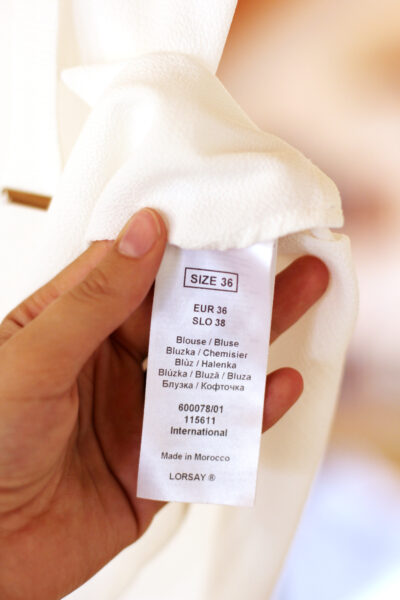

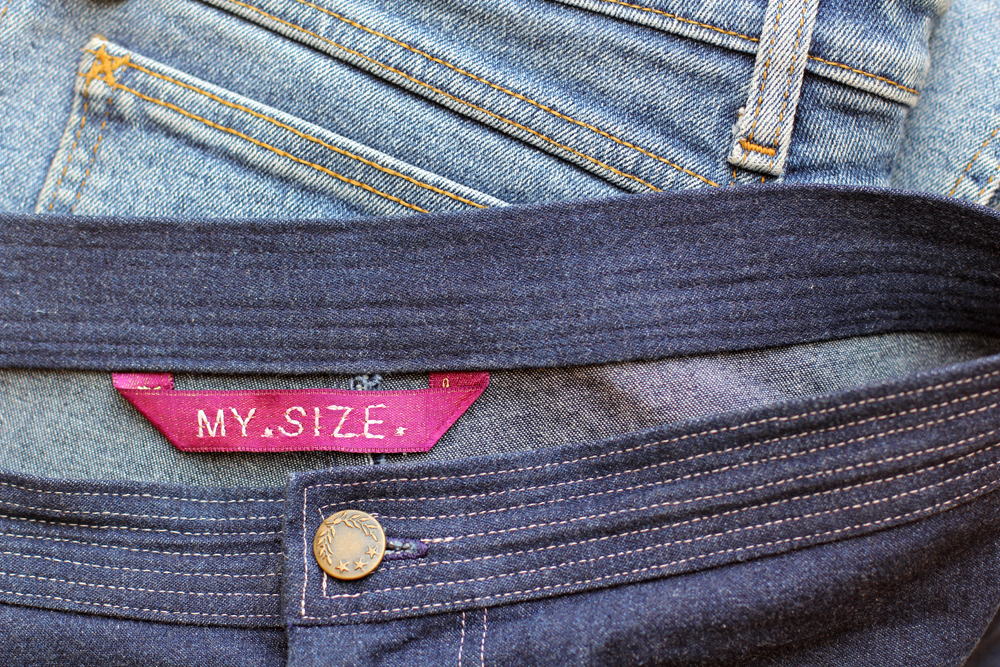
By the way, there is also no consistent sizing when it comes to different sewing pattern brands. But size becomes less important and “just a number” once you start seeing through this system. We are also able to cut between sizes, merge sizes or alter patterns altogether. I mainly use sizing as a rough guide to cut out a pattern. I often cut out one size larger and take in the seam allowance where necessary. So, when making garments, we do not sew a Size 10 or a Size 36, we sew a “my size”. Decreasing the overemphasis on size and numerical identities boosts confidence and satisfaction with self. Furthermore, this helps to focus more on individual style and personal traits as key components of beauty. So let’s create some garments at home and save us some frustrating shopping trips!
There are various ways in which making handmade clothes can help with a healthier body image. Sewing might not necessarily lead to 100% self acceptance and uncompromised body positivity, but it might help to develop a more holistic, stable mental image of yourself and your body, that is less prone to quick fluctuations.
After all this talk about positive body image … don’t forget: It’s ok to feel body negative, too. It’s hard when we look in the mirror constantly and don’t like what we see, it’s hard when your handmade clothes suddenly don’t fit anymore, it’s hard to run around with a measuring tape all day. It’s hard if you feel like a pattern you love looks better on everyone else. It’s hard to have to cut out a larger size. There will be days like that, too, and sometimes even sewing won’t change that. And that’s ok.
All in all, sewing is good for you! It is not only a fun, creative hobby, it also helps in unexpected ways. It’s healthy and pays off in all kinds of good ways.
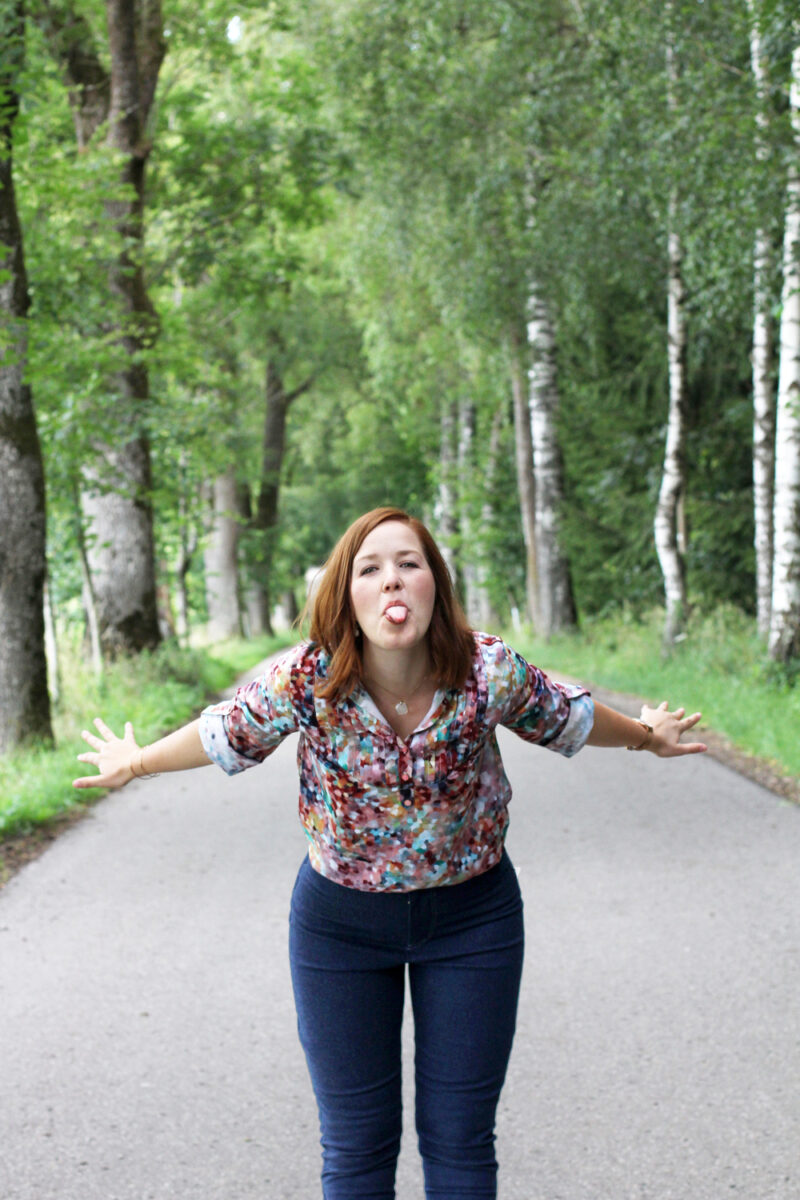
So next time you feel guilty for spending too much time behind the sewing machine, remind yourself that sewing may be a little like taking a trip to a spa – and what can be wrong with some spa time?
***
If you found this article interesting, I think you might enjoy reading the following posts:
Interesting articles by other sewing bloggers on the topic:
- Karen Ball, The Guardian, “Can Sewing Change your Body Image”
- The Geeky Seamstress, “Sewing and Body Image”
- Jennifer Rushmore of Cashmerette, “Coming to Peace”
- Gretchen Hirsch “Sewing and Body Image”
- Not Your Average Average “Body Image and Sewing”
- Tasha of Stale Bread Into French Toast “Thoughts about Sewing, Empowerment, and Body Image”
- Mary, Idle Fancy Blog, “Sewing the Curve: Thoughts on Size, Patterns, and Body Image”
- Kathleen on Sewing & Aging Bodies for the “2018 SMYLY Challenge”
xx
Charlie
Happy sewing!
♥
facebook/bloglovin/pinterest
twitter/instagram
Stay in touch!

Loved this article! I have tended to be so critical of my perceived “imperfections” until reading so many blogs and seeing women of all sized and shapes proudly displaying the clothing they have made. This post pulled it all together for me. Thank you!
Thanks for your kind comment, Dona! x
I wonder how sewing would work in a clinical setting. Would those larger than RTW size numbers blow it out of the water before they even got started? Maybe restrict patterns to those only with letter designations? I guess it would have to be funded by some research grant because insurance certainly wouldn’t pay for sewing/fitting instructors and machine/studio rentals.
Personally I did get the, aha, no WONDER it was always so hard to find clothes that fit years ago when I did my first pants sloper, and it did make me feel better. Now I measure and fit adjust and think, holy **#! I really DID get fat as hell. Considering I just went over 300lbs and can get winded going up stairs, it’s a much healthier reaction than continuing to ignore it- supporting your body positivity/negativity argument
I completely agree with you! I published a blog post for the SMYLY challenge that was included in their flagship issue of their magazine (“Sewing Makes You Love Yourself”) which you can read here if you like 🙂 https://www.psychicsewerkathleen.com/smyly2018-challenge/
My issue re body image is different from most of the contestants (I’m 63 so my relationship to my body is much different from women half my age and has altered drastically over the years as it tends to do for most women) – I’ve had more than 50 years to get used to living in this adult body 🙂
What I do notice is that as most sewist’s bodies change (and they WILL change as you pass through the stages of a woman’s life from birth to menopause to old age) they move away from garment sewing and into crafts and quilting because they get so discouraged with making clothes that stop fitting. It’s one thing to grow to big to fit into RTW but it’s quite a different experience to grow out of your handmade wardrobe. Most garment sewists I’ve noticed throughout the years who stick with garment sewing tend to be rather diligent in maintaining a steady body weight as much as they possibly can. Probably higher in the population that most. Many aging garment sewers talk about the struggle to maintain the same body weight 🙂 The difference is that they do it not so much because of the way they LOOK but more out of a desire to keep fitting into their handmade wardrobe!! 🙂
Just wanted to throw this observation into the mix if there ever is a research study in the works 🙂
Psst, Kathleen – we keep getting requests on the Sewcialists survey to have more info on fitting an changing body as it ages… any chance you would like to help us with a post on that topic? Pretty please????? Email us if you’d be interested! <3
🙂
Kathleen! This topic is fascinating and extremely interesting. Thanks for sharing! I’ll check out your article now 🙂 Even being a young woman still, I notice my body changing and gaining a couple of pounds here and there I will most likely not get rid of anymore. I used to struggle with not fitting in my first makes anymore, but that was also partly to do with hanging onto all my handmade clothing. I recently started to include handmade garments when I declutter and give clothing away to charity shops. This helped me to accept the fact that even handmade garments have their time eventually. But there are quite a few wardrobe staples I would be very sad to let go of… I recently noticed I did not fit into one of my Hepburn dresses anymore and felt negative about myself all evening… Thanks for throwing that point into the mix! xx
Loved your article, Kathleen! I have included it in my list! x
I’ve been sewing since I was 12. And, most folks would think I’m pretty small. Since I’ve always worked with what I’ve been given, I don’t know that I have any ah-ha results of sewing. But I will never forget the day my mom-in-law told me to copy a ready-to wear pants in order to make home made pants fit. My back inseam is more than four inches longer than my front. Whoa! My athletic body shape gives me a strong, round behind. And ready-to wear doesn’t allow for that in my size. In retrospect, my thinking was more about “My shape is the “right” shape,” and the pattern makers for ready-to-wear are nuts! Perhaps the body image work had already been done! I’m with your other commenter. Lets do some research on whether sewing helps distorted images improve their relationships with themselves!
Thanks for this Bette! I think all those pattern brands can try all they want, they’ll never get our size right! 🙂
x
Another great post! I’ve read lots of posts about how sewing improved body image, but I really appreciate that you have the right language to explain things clearly! Thank you for sharing your knowledge!
Thanks for your lovely feedback, Gillian! Much appreciated xx
Excellent post. Especially as I was in “trouble” for spending too much time sewing this weekend. Now I can justify it with being really good for mental health issues and my own health. Keep posting!
I, too, felt that sewing has helped with my body image. My attitude has become that it’s not so much “flaws” as it is “differences” – I’m bigger here, shorter there, fuller over here than the standard pattern. I found myself starting to celebrate my curves – who’d want a flat butt, or slim hips ?! – rather than see needing to do full bust and butt adjustments as flaws. Even when I shop ready to wear (pants!), I now see it as a matter of cut rather than size or flaws. The pants don’t fit because they’re cut wrong – it’s their design, not my flaws.
I would be fascinated to see a study of he effects of sewing on body image. My only question is timeline- is a short 8 or 12 week treatment enough to have an effect? Or does it come from years of sewing?
I’ve been sewing since I was 19, and my size has varied considerably – up/down yo-yo – over the years as my mood shifted and an eating disorder worsened. Once it was treated i was more stable in weight, but it’s only recently I’ve been (intentionally) shrinking to a healthier weight because my relationship with food is finally healthier so I trust myself to not re-trigger. Which puts me in the opposite category of most aging sewists (I’m 46)- I’m experiencing the sadness of favourite garments ending up in the “too big” pile and having very little me-made items in my current and future sizes. But it’s not changing my desire to sew, at all. I’m too hooked! Maybe my stash will finally shrink, too…
I tend to view myself as being smaller than I actually am. Although, I’m not perfect. I do have a pouchy tummy and my boobs touch said tummy when I sit. I’ve done this for as long as I can remember being aware of my own body. I didn’t really do this as much as a child or teen. I’ve been sewing for more than half my life now. I learned in Home Ec. in H.S. Freshman year and fell in love with it. My parents got me my first sewing machine and supplies that Christmas. I either make my own clothes or I shop by my measurements. I never use actual clothing size. I’m the person with the tape measure measuring all the ready to wear. I carry one in my purse, haha. Hell, when people ask me what size I am, I’m clueless. I think I’m a medium, but sometimes, I’m a large or extra large. So, does that make me a medium large? And number? Well, I tend to sew from a 14-18 and usually have to adjust the pattern between the 3 since parts of me fall in different areas. I don’t make toiles. I don’t like it. So, I tend to make my clothes bigger than necessary, put them on, adjust, and keep going. I’ll mark where the pattern says to put the darts and baste. Then, I’ll put the garment on me and see how it lays. I do similar for everything. I’m also legally blind and this is a hurdle. But, I’ve managed to do ok. I make wearable things that impress others, so…… I recently had to adjust how I did things as I’ve gained an average of 2 inches all around. But, I am in my 30s now when things tend to slow down and fat tends to set in into places. Maybe this is why I think I’m smaller than I actually am.
I’ll play Devil’s Advocate here and agree with your post…up until a point. The “my size” sewing attitude works very well for women in misses’ sizes and in the lower end of plus sizes. For myself, I had quite an eye-opening experience a few years ago when I packed on over 30 lbs in 6 months while my father died of cancer. Suddenly, I was out of the size range of most sewing patterns and couldn’t simply “pick a larger size”. Frankly, it was devastating to me–I hated RTW clothes, and I was too big for most of the “cool” sewing patterns, until eventually my head cleared and I took the weight back off.
There’s also the factor of representation online. I’m an editor at the Curvy Sewing Collective, and we still constantly see complaints about not knowing how a certain pattern will look “on someone my size”. Curvy/plus women are still very underrepresented in social media in the online sewing community. There’s a perception that it takes a certain amount of bravery to post photos of yourself in me-made clothes because of the judgement that’s out there on the internet.
Overall, I’m happy that sewing gives me a lot more choices in the clothing that I can wear in RTW, but it’s far from a panacea at this point.
Hi Michelle! Thanks for your insight! You’re absolutely right. Just as with RTW fashion there are limits with plus sizes when it comes to sewing patterns. I had a conversation about this with my mum-in-law the other day, because she was really upset with one of the new Burdastyle issues. A lot of the prettier, ‘cooler’ patterns where for standard sizes only and the plus size patterns of that particular issue looked out-dated, ill-fitting and frumpy. She actually wrote to Burdastyle to complain about this and asking whether they’d be able to grade sizes up on the standard patterns, so there wouldn’t be different patterns for plus sizes anymore. (I’m not sure if they ever replied to this). I wholeheartely agree that there should be a lot more gorgeous plus size patterns and more representative plus size models. (Some of the plus size models in Burdastyle do not look plus size to me…) Since I draft patterns myself,I know that there are certain issues with body shape and proportions, though, when scaling up a pattern. I gets very hard to preserve cutting lines, proportions and shapes, when scaling up to certain sizes. This is why it is often easier to create patterns that are especially designed to fit larger sizes. Still, I think you’re right. We should celebrate all shapes and sizes!
Thanks so much for sharing, Michelle! x
I use sewing as therapy for my depression, and also now cut my own patterns so that the clothes I sew fit me. My depression is now more under control. I’m pretty sure this all links together, and the results my husband has noticed means that he’s always happy for me to have a new project and buy more fabric!
I have RTW clothes in my wardrobe from a size 12 to a 20 all of which fit me. I realised a long time ago that sizing varied so much between different brands and as I have suffered in the past with eating issues did not want to get into that again so now for anything I buy I cut out the size labels. I have referred to my size as me size for a long time and think it is a great idea.
I have only recently started sewing my own clothes and have found that sometimes I have to cut out very large sizes from commercial patterns, up to a 24 to fit over my bust and then take in the rest of the garment. This does not worry me now as it would have done years ago when the thought of being a size 24 would have sent me into starvation mode. I am not 24 or 12 or 14, 16 or 18, I am me.
Years ago I took a moulage class with Lynda Maynard. It was amazing how fantastic each one of us looked in the muslins we’d made to our own measurements, no matter what age, shape or size.
Sewing (and/or knitting) one’s own clothes to fit one’s particular size and shape has so many beneficial therapeutic aspects to it, and I’ve seen scientific articles about the benefits of knitting. This is the first time I’ve read about a possible connection between creating one’s own clothes and improving one’s body image, and I must say, from my own experience I would have to agree that once you are equipped with the knowledge of what silhouettes look best on your unique size and shape and have the tools/skills/and knowledge to alter patterns or create your own patterns to complement said size and shape, one’s sense of one’s body does improve.
I am in my mid-30’s currently and have adult onset mitochondrial disease which causes fatigue and lack of energy, which in turn, caused me to gain weight rapidly over the last few years so that despite having a low-normal BMI in high school, I was now considered to be in the low, but obese range. And despite being of normal weight in high school, I must confess, I believed that I was overweight. (Of course, it didn’t help that one of my friends was secretly anorexic and another was so physically active and had lost so much fat that she had stopped menstruating).
Another problem at the time was that RTW clothes tend to be designed for longer waisted teens and women and if you happen to be busty, you’d end up with either a Misses or unisex shirt that fit like a moomoo, or something made with some lyrca or spandex and hugged your curves to death, like a boa constrictor, and left your midriff (or a rather unattractive swatch of skin below your belly button and where your jeans began–if you were short waisted, like I) bare. That’s when those low rider jeans were in style…you could be sitting behind a girl in class and find the top of a black thong with a Playboy bunny staring you down as mild mannered Mr. Jans, the geography teacher, meandered to and fro in the front of a map and in a monotone recited the importance of the family planning programs that were introduced into India and reinforced through postage stamps. Those were also the days of the dreaded “muffin top”. Thanks to my group of friends, I was under the impression that the opposite sex found you irresistible if your jeans were at least 1″ or 2″, too large in the waist and thigh, and so I never dealt with the muffin top issue in high school, but I did suffer the curse of the sinking jeans. Of course, the jeans would slide down anytime I sat, stood, or moved so I was constantly hiking them up, and being a stubborn teenager, I could never secure them with a belt at my waist! What a fashion faux pas!
Anyway, when I started to gain weight and realized I couldn’t fit into RTW shops for women my age unless they were plus-size, I realized then what a fool I’d been and that I’d had some sort of body dysmophoric disorder regarding my weight. I also had time on my hands so I educated myself on what sort of cuts and silhouettes flattered my figure.
I then put some time in relearning how to operate a sewing machine and relearning how to knit. I’ve come a long way from where I started with sewing, but there is so much to learn in order to say, accurately do a full bust adjustment that reflects your measurements, or create a sloper if you’re short waisted and full busted. If you have any references you would recommend I check out for learning this material, I would greatly appreciate it.
I concur with one of the previously mentioned contributor’s mums. Burda does seem to put most of it’s design brains behind the regular size line and have less stylish (and don’t let anyone tell you it just SEEMS less stylish because it’s on plus-size models) patterns and fewer patterns in plus-sizes. Here! Here1
Hi Renee, thanks so much for sharing!
I often browse sewing blogs for fitting tutorials. I think Closet Case Patterns, By Hand London etc. are a great resource for such issues. I have several fitting books and I most often use “Patternmaking for Fashion Design” by Helen Joseph-Armstrong, which is quite comprehensive and probably not beginner’s material and “The Complete Photo Guide to Perfect Fitting” by Sarah Veblen which is great for quickly looking up fitting fixes. Hope that helps! 🙂